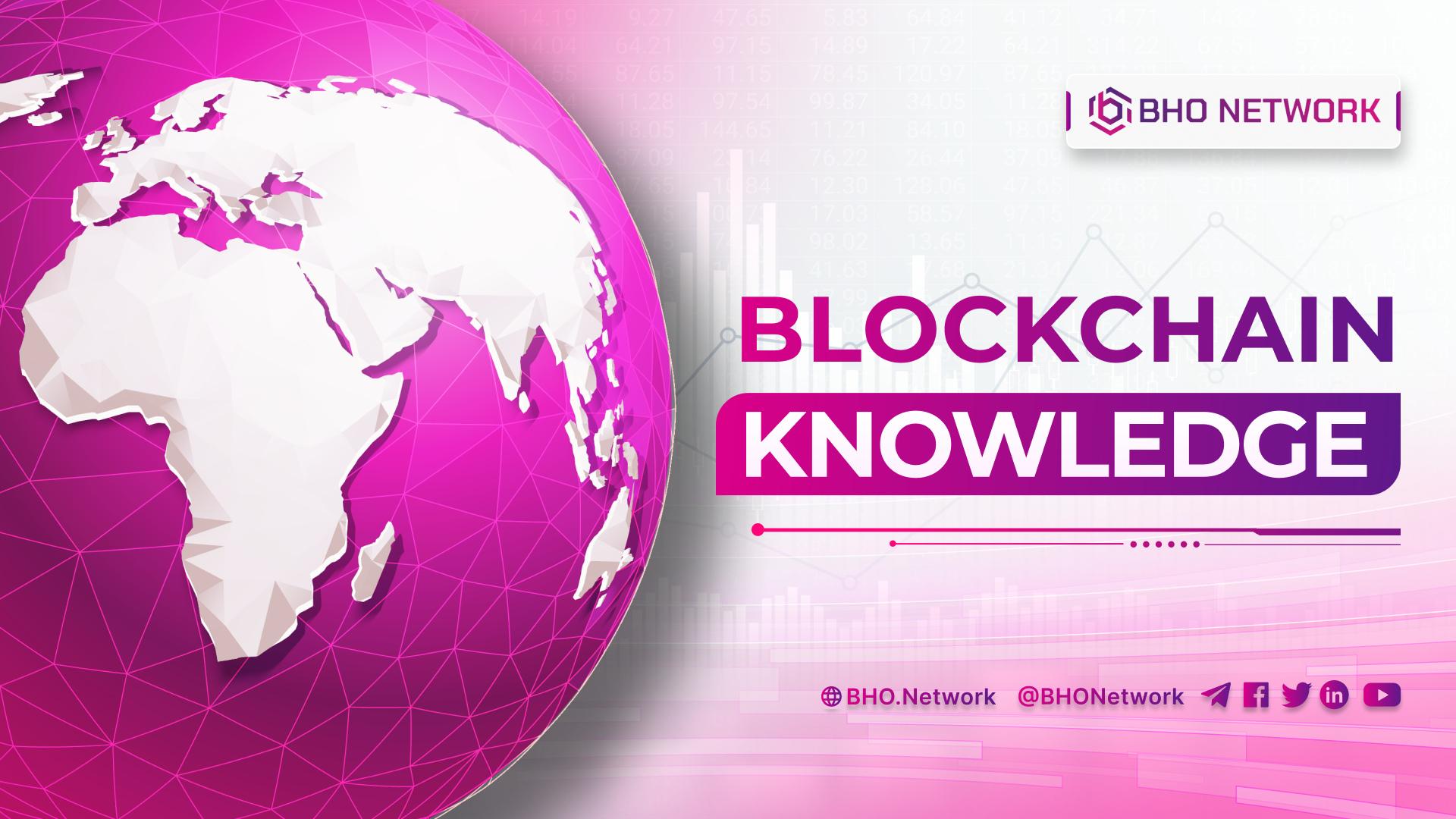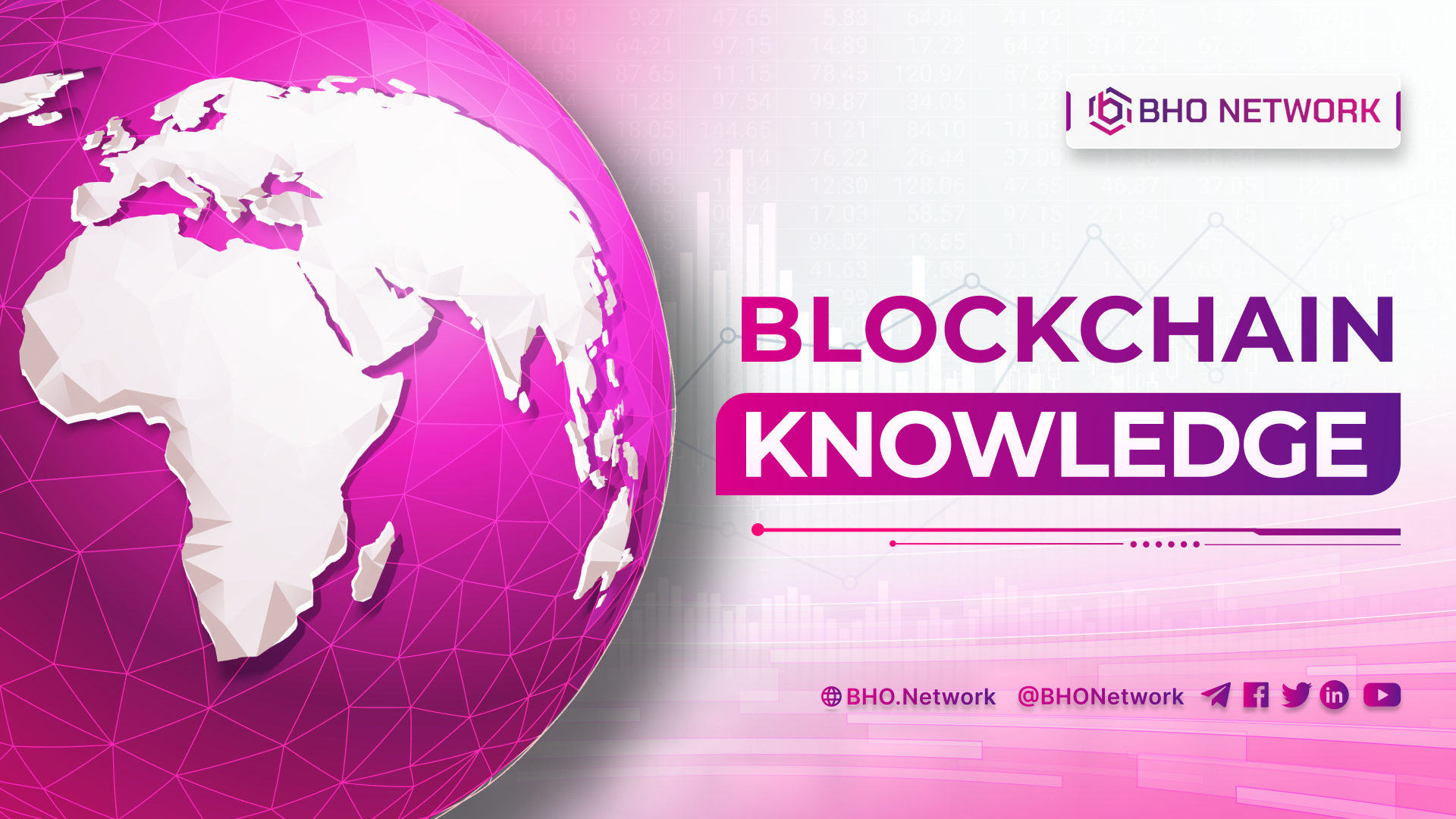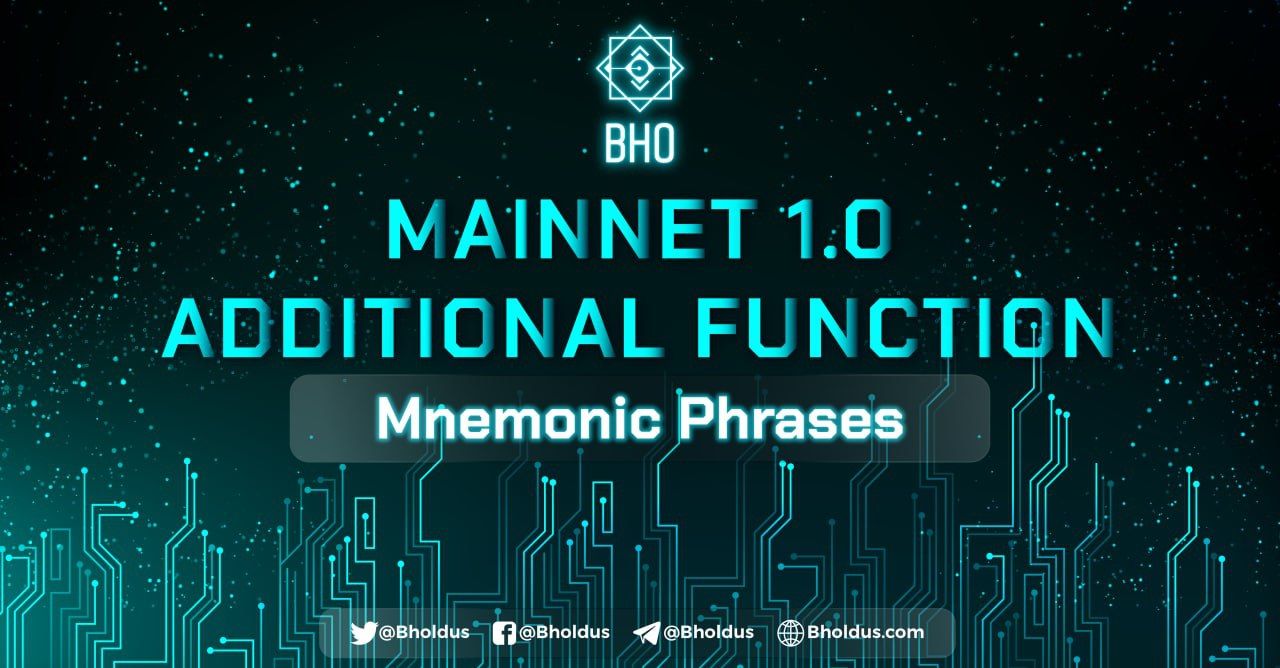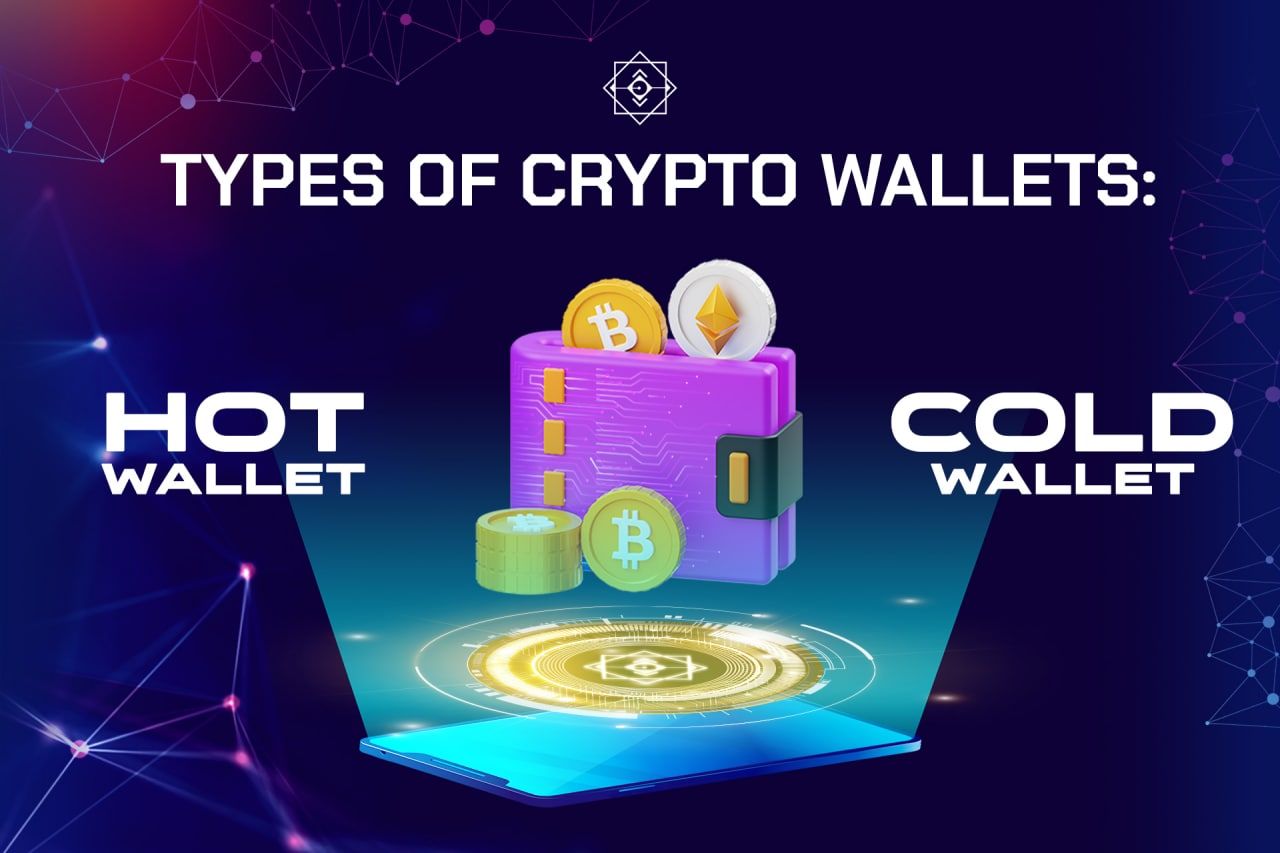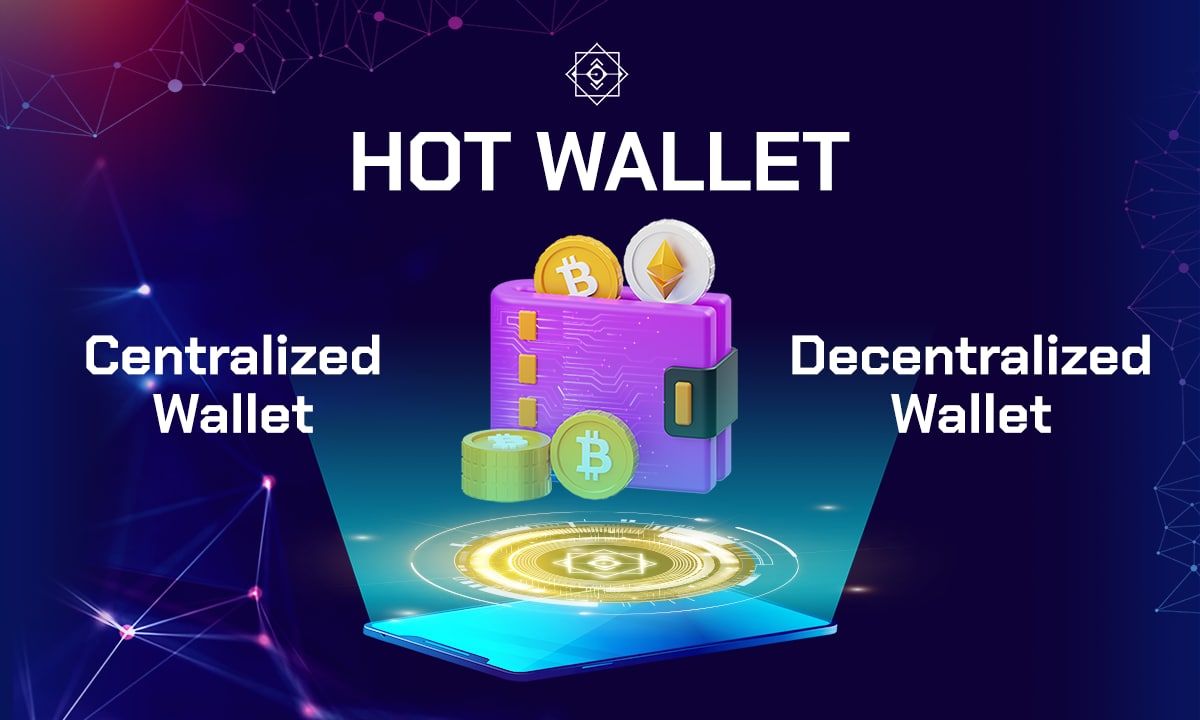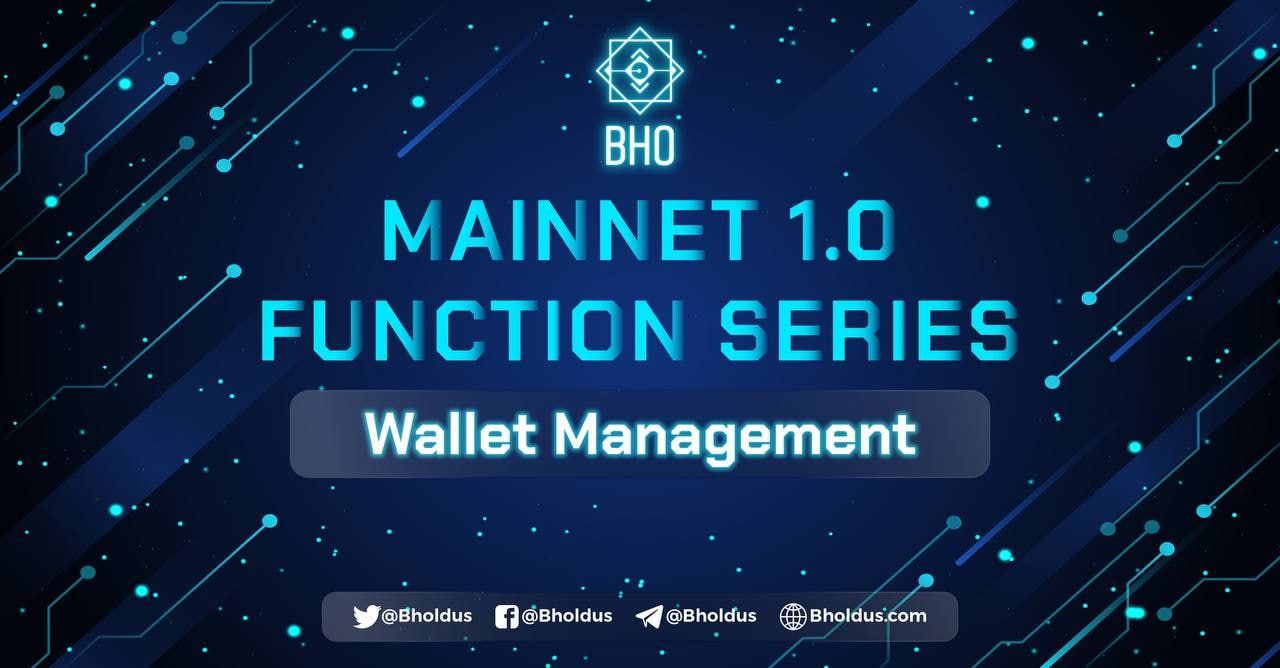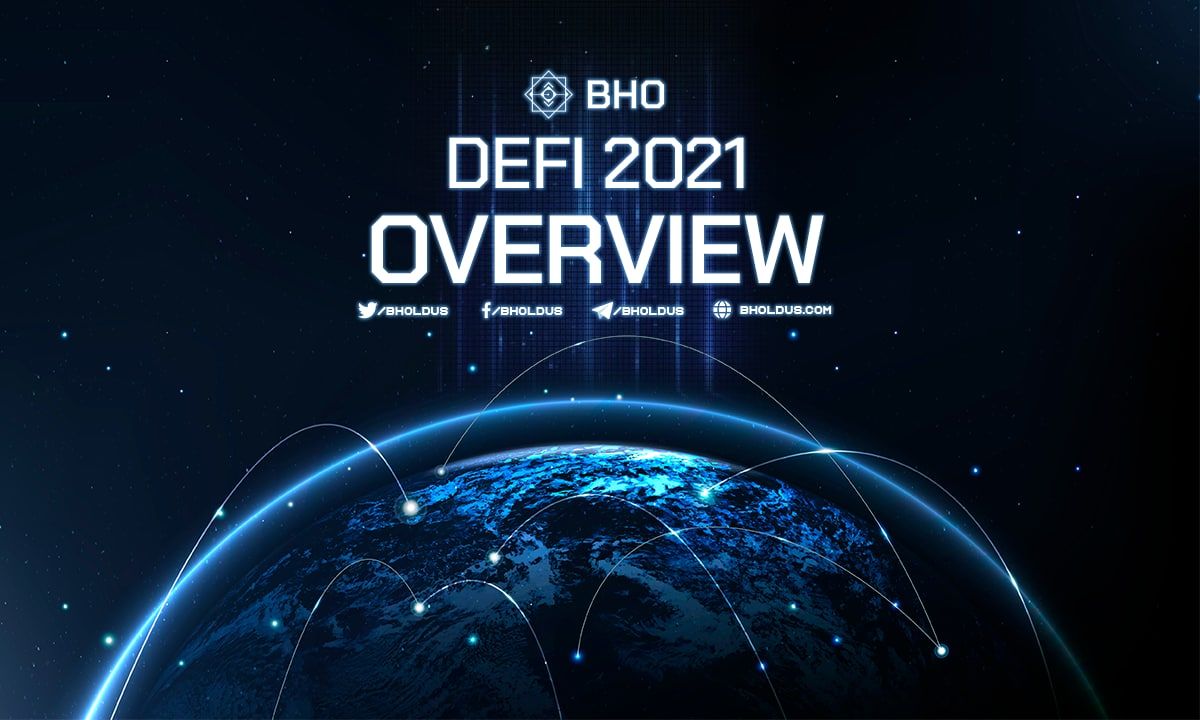- Blog
- Crypto News
- Crypto Terms for New Investors
Crypto Terms for New Investors
- 1. What is Cryptocurrency?
- 2. Basic Crypto Terms
- 2.1 Fiat currency
- 2.2 Cryptocurrency
- 2.3 Bitcoin and Satoshi
- 2.4 Stablecoins
- 2.5 Altcoin
- 2.6 Token
- 2.7 Mining
- 2.8 Whitepaper
- 2.9 Staking
- 3. Basic Crypto Terms In The Cryptocurrency Market
- 3.1 Exchange
- 3.2 Blockchain
- 3.3 Ecosystem
- 3.4 Layer
- 3.5 Leaf node
- 3.6 Launchpad
- 3.7 MasterNodes
- 3.8 Parent node
- 3.9 Root node
- 3.10 Sibling node
- 3.11. Bear and Bull market
- 3.12 Airdrop
- 3.13 Oracle
- 3.14 Pool
- 3.15 AMM
- 3.16 Cross Chain
- 3.17 Hard Cap & Soft Cap
- 3.18 Market cap
- 3.19 Testnet
- 3.20 Mainnet
- 3.21 CEX AND DEX
- 3.22 Candlesticks
- 3.23 Bridge - Blockchain
- 3.24 Aggregator
- 3.25 Algorithmic Stablecoin
- 3.26 Circulating Supply
- 3.27 Child node
- 3.28 On-chain data
- 3.29 Derivatives
- 3.30 Money Flow
- 3.31 Multichain
- 3.32 Order-book
- 4. Basic Crypto Terms About The Ecosystem
- 4.1 Ethereum 2.0
- 4.2 Etherscan
- 4.3 ERC-20
- 5. Basic Crypto Terms When Trading
- 5.1 Hold and HodL
- 5.2 Pump & Dump
- 5.3 Stop Limit or Stop Limit Order
- 5.4 Stop Loss
- 5.5 Margin
- 5.6 Gas fee
- 5.7 Gas war
- 5.8 Fibonacci
- 5.9 Volatility
- 5.10 Burn
- 5.11 Fork
- 5.12 Hard Fork
- 5.13 Soft Fork
- 5.14 Breakout
- 5.15 Rekt
- 5.16 ATH and ATL
- 5.17 ASIC
- 5.18 Collateral asset
- 5.19 Cliff
- 5.20 Full node
- 5.21 Full lock duration
- 5.22 Gem
- 5.23 Flash Loan - Quick loan
- 5.24 Impermanent loss (IL)
- 5.25 Long - Leveraged buying
- 5.26 Short - Leveraged Sell
- 5.27 Mint
- 5.28 Mining, Minner
- 5.29 Vesting
- 5.30 Vesting
- 5.31 Volume
- 5.32 Discord
- 6. Crypto Terms For Investors
- 6.1 FOMO - Fear of missing out
- 6.2 FUD
- 6.3 The Shill
- 6.4 Mooning or Coin to the moon
- 6.5 51% attack
- 6.6 Bottom Fishing
- 6.7 AMA - Ask Me Anything
- 6.8 BAGHOLDER
- 6.9 Peak
- 6.10 DYOR - Do Your Own Research
- 6.11 Liquidity Provider
- 6.12 Trader
- 7. Basic Abbreviations In Crypto Terms
- 7.1 NFT-Non-fungible token
- 7.2 Defi và Cefi
- 7.3 CeDeFi
- 7.4 DAO
- 7.5 DEX - Decentralized Exchange
- 7.6 POS - Proof of Stake
- 7.7 POW - Proof of Work
- 7.8 POA - Proof of Authority
- 7.9 POB - Proof of Burn
- 7.10 POD - Proof of Developer
- 7.11 ICO - Initial Coin Offering
- 7.12 IEO
- 7.13 IDO
- 7.14 IFO - Initial Farm Offering
- 7.15 IPO - Initial Public Offering
- 7.16 KYC - Know your customer
- 7.17 Dapp
- 7.18 GameFi
- 7.19 EMA
- 7.20 FDV - Fully Diluted Cap
- 7.21 HYIP
- 7.22 MMO - Make Money Online
- 7.23 OTC - Over the counter
- 7.24 QR code - Quick response code
- 7.25 SHA - Secure Hash Algorithm
- 7.26 TVL - Total Value Locked
- 7.27 YTD - Year to date
- 8. Other Basic Crypto Terms
- 8.1 Halving
- 8.2 Ponzi
- 8.3 Liquidity
- 8.4 Smart contract
- 8.5 Whitelist
- 8.6 Yield Farming
- 8.7 Hashrate/Hashpower
- 8.8 Binary Option
- 8.9 Hackathon
- 8.10 Leverage
- 8.11 Non-custodial
- 8.12 Replay Attack
- 8.13 Cold Wallet
What are Crypto terms? Many investors question this when they are new to cryptocurrencies - a relatively complex economic industry. In this article, BHO Network will provide helpful information to help readers answer this question!
1. What is Cryptocurrency?
Around the end of the 20th century, many ideas were developed to set up a payment system without depending on other third parties, such as the State, banks, Etc. That is the premise for systems like Flooz, Beenze, or DigiCash.
However, these ideas all failed and were gradually forgotten. It was not until 2008 that Satoshi Nakamoto - an anonymous programmer- created the Bitcoin cryptocurrency.
Bitcoin works differently from other currencies, and there is no bank or third party to manage it; the system will run on a peer-to-peer network protocol on the Internet. Here we will learn more about crypto terminology and terms in Coin!
2. Basic Crypto Terms
Cryptocurrency With BHO Network, explore nine basic crypto terms that new investors must know.
2.1 Fiat currency
Fiat currency, known as legal tender, is a currency with only symbolic value valued and issued by the State.
There will be a different fiat currency; the country will reflect the economic strength in the value and popularity of the fiat currency in that country.
For example, legal currencies such as EUR or pound... (high value) and USD (high popularity) are strong economies.
2.2 Cryptocurrency
The terms in Cryptocurrency can be understood as Cryptocurrency, electronic money, or virtual money. This is a currency issued by a network of computers. Cryptocurrencies operate entirely independently without any third-party management.
2.3 Bitcoin and Satoshi
Bitcoin is the name of a cryptocurrency. Up to this point, Bitcoin is considered the most vital Coin representing cryptocurrencies. Thanks to the advent of Bitcoin, the concept of "cryptocurrency" is also known today.
Satoshi is the smallest unit of currency of Bitcoin. 1 BTC (Bitcoin) = 10^8 Satoshi. Besides, there are other official Bitcoin units such as:
- 1 mBTC (millibitcoin) = 1/1000 BTC = 100,000 Satoshis.
- 1 μBTC (microbitcoin) = 1/1,000,000 BTC = 100 Satoshis.
2.4 Stablecoins
Stablecoins are coins pegged to a specific fixed asset to stabilize the Cryptocurrency market, backed by the assets it is anchored with, such as fiat money, gold, or other cryptocurrencies. The most popular stable coins today include USD Coin (USDC), Tether (USDT), Dai (DAI), and VND Coin (VNDC).
2.5 Altcoin
Altcoin stands for "Alternative coin," known as alternative Cryptocurrency. Or we can understand Altcoins as all cryptocurrencies that are not part of Bitcoin (even tokens are still counted as altcoins).
For example: ADA, BNB, ETH, SOL, and AXS… are all called Altcoins.
2.6 Token
The Token is a cryptocurrency code formed on a pre-existing foundation and used as a currency. It is different from a "coin," which refers to an individual operating asset with its storage wallet.
Tokens are considered fuel (gas) of the network or unit of exchange (CMT). They are stored in the Coin's wallet and have transaction fees based on the native platform.
2.7 Mining
Mining, also known as mining, is how miners (miners) mine cryptocurrencies using supercomputers (miners).
2.8 Whitepaper
The whitepaper is an introductory text on a cryptocurrency, providing detailed project and technical information about that digital currency. This is the calling coined by Bitcoin founder Satoshi Nakamoto.
2.9 Staking
Staking is just locking an amount of Cryptocurrency in the chain to ensure the operation of the Blockchain and verify transactions. The Staking will then receive a cryptocurrency reward, a Proof-of-Stake (PoS) method commonly used to mine cryptocurrencies.
Staking is like depositing money in a bank and receiving interest daily, monthly, or yearly.
3. Basic Crypto Terms In The Cryptocurrency Market
The market is relatively complex; if you're a newcomer, you should know the Crypto terms listed below by BHO Network.
3.1 Exchange
Exchange is the centralization of factors in the Crypto market, such as buyers, sellers, and traded products (Cryptocurrencies) or other intermediaries in all exchange activities.
There are two primary exchanges: centralized exchanges (CEX) and decentralized exchanges (DEX).
3.2 Blockchain
Blockchain is like a decentralized ledger that stores transactions and smart contracts for a cryptocurrency platform. This ledger will be shared with everyone who joins the network.
This shows us that there is not just one place in the system but that one document can serve as the basis of trust because copies of the same ledger version are copied and placed in multiple locations.
3.3 Ecosystem
The Blockchain Ecosystem, Ecosystem in Crypto, is a system of many connected products. Each Blockchain will want to develop its ecosystem as an infrastructure provider.
There will not be an exact definition of how many projects an ecosystem will have, but identifying an ecosystem is not tricky. The popular ecosystems are Ethereum, Solana, Terra, Binance Smart Chain, Near, Etc.
3.4 Layer
Layer refers to blockchain layers. Layer 1 is the Blockchain, and layer 2 is the solution to Layer 1. Layer 2 currently only appears in Ethereum due to the disadvantages of transaction fees, ease congestion, non-scalability, Etc...
3.5 Leaf node
Here is a kind of node inside the Blockchain. The leaf node is a node type that has no child nodes.
3.6 Launchpad
Launchpad is where current projects issue tokens and raise capital for IDO; some familiar names include Polkastarter, DAO Maker, Solstarter, BSCPad, Etc.
3.7 MasterNodes
MasterNodes are the servers that execute different functions on the system. A Masternode is similar to a Blockchain and runs online at a fixed static IP address.
3.8 Parent node
The parent node contains the extension nodes (child nodes).
3.9 Root node
The root node is the highest in the Blockchain network.
3.10 Sibling node
The sibling node is the node that connects to the parent node.
3.11. Bear and Bull market
The bull and Bear market is named after the up and down market trend based on how the animals attack:
- Bull attacks by hitting upwards, and Bear attacks by scratching downwards. Therefore, when the market has a positive direction, it is called a bull market and a bear market for the opposite case.
3.12 Airdrop
An airdrop is a form of giving away free Tokens to users. Popular Airdrops are Retroactive, performing tasks required by the project, Holding and Staking master tokens, Etc.
Airdrops are prioritized in advertising strategies, introducing ICO projects to attract users to join the coin project community.
3.13 Oracle
Oracle is a crucial part of Defi, and Oracle projects will help other projects in Crypto to update real-life data. Some of the projects in this area can be mentioned as Chainlink, Band Protocol, DIA, Etc.
3.14 Pool
Commonly found in DEX and Lending projects. The pool is likened to a vending machine, where users put assets in and then wait for others to buy, sell, and borrow according to their needs. Users deposit assets into a Liquidity Provider pool and receive transaction fees in return.
3.15 AMM
AMM is an acronym for Automated Market Maker, considered an automatic liquidity calculation tool for exchanges. AMM can be seen as a new decentralized exchange, possessing many outstanding advantages compared to old-style and traditional centralized exchanges.
3.16 Cross Chain
Each blockchain network has a different structure, so there are many limitations in transferring assets protocols. It is complicated for Vietnamese people to pay in Japanese Yen in Vietnam, and it is difficult for Japanese people to pay in Vietnamese Dong in Japan.
Cross-chain is a solution to transfer assets from one chain to another to optimize combining chains.
3.17 Hard Cap & Soft Cap
Hard Cap is the maximum amount the project development team can receive from its Token sale at the ICO stage, and Soft Cap is the minimum amount the development team needs to raise to launch its product.
3.18 Market cap
Market cap is the capitalization value calculated by the following formula: Coin price x Number of coins issued.
3.19 Testnet
Testnet is a test network; this is considered a Blockchain version for developers to test new features without affecting the current protocol. Usually, every Coin will have its Testnet for testing new features.
3.20 Mainnet
Mainnet is the official network developers use after testing on a successful Testnet. When the Mainnet is released, the Coin will have an independent Blockchain network and have its wallet platform. However, it may change if there are new updates from the Mainnet project team.
3.21 CEX AND DEX
CEX (Centralized Exchange) is a centralized exchange under a third party (company or organization). That company or entity will control any electronic assets you deposit into your account on the exchange—for example, Huobi, Binance, and Okex...
DEX (Decentralized Exchange) is a term for a decentralized exchange. Although born later, the DEX has received more attention from investors.
3.22 Candlesticks
Candlesticks provide information about the price of a cryptocurrency over a specified time.
3.23 Bridge - Blockchain
The bridge is the bridge between blockchains. Since assets on blockchains have their standards, they cannot be traded back and forth, so a bridge is needed.
3.24 Aggregator
The aggregator is a platform that contains many different features. Such as swapping, lending, Etc.
3.25 Algorithmic Stablecoin
Algorithmic Stablecoin (Algorithmic Stablecoin) is the most modern Stablecoin model, with a mechanism to keep the price at $1 based on the algorithm, not the backed asset.
3.26 Circulating Supply
Circulating Supply is the total amount of Coins circulating in the market.
3.27 Child node
A child node is a node located in the Blockchain.
3.28 On-chain data
On-chain data is a metric of an asset in the Blockchain; this metric can be the number of wallets holding the token, the number of transactions at a specific time, or the deposit and withdrawal status on the exchange.
On-chain data is used to predict the current situation of an asset and thereby help make future hypotheses, whether the price will rise or fall, the Supply and demand, Etc.
3.29 Derivatives
Derivatives are the names of financial instruments. Derivatives allow investors to trade multiple products based on price even without owning the product. Using derivative products enables investors to buy in large quantities much more than the number of assets they own.
3.30 Money Flow
Money Flow can be understood as the general market’s money flow. When pouring money into an ecosystem, it will cause the tokens in that system to increase in price like "water in the boat."
3.31 Multichain
Multichain is just projects built with multiple blockchains to help assets on different blockchains- still use the project's services without converting over a particular blockchain.
3.32 Order-book
It can be visualized as an order book. If users want to buy or sell anything, they can create an order; they will be listed and wait for other users to buy/sell. Some exchanges that use Order-book are CEX, such as Binance, Huobi, Okex, Kucoin, Etc.
4. Basic Crypto Terms About The Ecosystem
Crypto information is diverse and has many new terms. BHO Network has created a list of Crypto terms about the ecosystem to make it easier to read and understand the terms and research project information. Follow along!
4.1 Ethereum 2.0
Ethereum 2.0 is an upgraded version of Ethereum with the move from Proof-of-Work (POW) to Proof-of-Stake (POS) to improve transaction speed and scalability on Ethereum.
4.2 Etherscan
Etherscan is a tool used to track, search, and look up transactions that have been and are taking place on the Ethereum Blockchain network. Users can find information about all tokens, addresses of ERC-20 wallets, transactions made, Etc on Ethereum through Etherscan.
4.3 ERC-20
ERC-20 (Ethereum Request For Comment) is one of the technologies of the Ethereum Network system. When issuing Tokens, this is the most commonly used standard for Smart contracts on the Ethereum Blockchain.
In addition to ERC-20, other token standards exist on the Ethereum network, such as ERC-721 and ERC223…
5. Basic Crypto Terms When Trading
When participating in transactions in the cryptocurrency market, investors must know the critical Crypto terms below:
5.1 Hold and HodL
These terms mean the same: long-term holding coins in a volatile market.
5.2 Pump & Dump
These are two terms that refer to the effects of the market on prices. Pump means to push the price up, also known as "pump price." And Dump is to push the price down, selling off assets to withdraw money.
5.3 Stop Limit or Stop Limit Order
A stop-limit order combines a stop order and a limit order. Thus, your buy or sell order will be executed soon when the price reaches the limit.
The limit point is also known as the stop price. This is an order to help investors manage capital effectively and measure the profit/loss of the investment portfolio. However, Stop Limit will quickly destroy better profit opportunities in highly volatile markets.
5.4 Stop Loss
Like Stop Limit, Stop Loss is an order to reduce loss possibility. However, Stop Loss is only used to sell when the trade has reached the stop price. In addition, you can use the Take Profit order - sell when the trade is profitable to limit risks.
5.5 Margin
Margin is a term that refers to the use of financial leverage in investing. This form is not yet common in the Cryptocurrency market; only some exchanges have this function.
However, margin trading is somewhat risky, and investors should consider it carefully before making a transaction.
5.6 Gas fee
When a user performs any transaction on the Blockchain (buying, selling, approving) but needs to put the transaction in the block, they will need to pay a gas fee, calculated based on Gwei. The bigger the Gwei, the more gas fee it costs, but the transaction will be completed faster.
5.7 Gas war
Gas war is a term to refer to the act of many users intentionally increasing Gwei, paying more to complete the transaction. This affects the Blockchain network, as other users will have to pay more expensive fees. Bots usually do gas war action.
5.8 Fibonacci
Fibonacci is an indicator in technical analysis derived from a mathematical theory of Leonardo Fibonacci living in the 12th century. Traders often use Fibonacci to draw support and resistance lines, find entry and exit points, and take profit and stop-loss positions.
5.9 Volatility
Volatility refers to the volatility of the market. This is an index used to measure the price volatility of a traded financial asset such as Cryptocurrencies, stocks, gold, Etc.
The higher the volatility index, the more susceptible the asset's value to changes, resulting in a sudden increase/decrease in a short period.
5.10 Burn
Burn is only a certain amount of Coin or Token permanently removed from the Supply to reduce inflation.
5.11 Fork
The Fork is a technical word often used by Bitcoin developers or in programming in general, but especially in open source projects. Simply put, it's just using the source code of pre-existing software and then changing it to create a different function.
5.12 Hard Fork
Hard Forks are large Forks making the old Blockchain incompatible with the new Blockchain, forcing the Blockchain to be split in half if not agreed upon by all users, causing it to create a new Cryptocurrency. Bitcoin Cash and Ethereum Classic are hard forks from Bitcoin and Ethereum.
5.13 Soft Fork
Soft Fork is compatible with old blockchains, so it will not split into new Cryptocurrencies.
5.14 Breakout
Breakout is a technical analysis term that describes the phenomenon of price breaking above support or resistance levels.
Technical tools used to identify breakout price points include moving averages, trend lines, price patterns (candlestick patterns, head and shoulders patterns, Etc.), or other technical indicators.
5.15 Rekt
Rekt is a concept to refer to someone's failure. In coin trading, people use Rekt to refer to a heavy loss.
5.16 ATH and ATL
ATH (All-Time High) is the highest point (in price or capitalization) that a coin, stock, Etc can reach in its price history.
The opposite of ATH is ATL (All-Time Low), the lowest price the asset has ever recorded. Breaking the asset's ATL can have the same impact as breaking the ATH – but in the opposite direction. Multiple stop orders can trigger when the previous ATL is broken, causing a sharp price drop.
5.17 ASIC
ASIC (Application-Specific Integrated Circuit) is a separate integrated circuit manufactured for a specific purpose.
For example, a Bitcoin ASIC miner is the miner that works with the most optimal mining performance because all of their resources will be concentrated to fulfill one need, which is Bitcoin mining.
5.18 Collateral asset
Collateral asset as collateral. Collateral is a property users deposit into the above projects to borrow money. To get the collateral back, you must repay the loan with a partial fee (depending on the project). Collateral assets are often found in Lending projects such as MakerDAO, Venus, Unit Protocol, Etc.
5.19 Cliff
Cliff often appears in the token release schedule section of projects. Cliff is a token locking period, and people in this category will not receive any tokens. It is usually applied to Tokens held by teams, advisors, or investors.
5.20 Full node
A full node can download a complete copy of a given Blockchain network and test new transactions based on the consensus principle.
5.21 Full lock duration
Full lock duration contains the Cliff phase (if any). In most cases without Cliff, the full lock duration equals the vesting period.
5.22 Gem
Gem is a term used to refer to potential projects, but the Token or Coin price is still low. These projects are usually Low Cap or Mid Cap and are expected to grow very high (x5, x10, maybe even x100).
5.23 Flash Loan - Quick loan
Flash Loan is a form of a loan without collateral, provided that the loan amount must be returned to the lender in the same transaction. You use that money to solve a financial problem; then, you pay back the borrowed money. All of this is done in 1 transaction.
5.24 Impermanent loss (IL)
Impermanent loss is a word that refers to the decrease in the value of an asset when providing liquidity than leaving it in the wallet and doing nothing. This term was widely popularized around August 2020, when the Yield Farming movement was "hot."
5.25 Long - Leveraged buying
Long is the activity of borrowing money from the exchange under certain leverage to buy an asset, wait for a high price, then sell it and return the capital (with borrowing fee) to the exchange.
5.26 Short - Leveraged Sell
Like Long, Short is the act of borrowing assets of the exchange under certain leverage and selling immediately, then buying back and paying the exchange with a borrowing fee when the price is low.
5.27 Mint
Mint means creating tokens, often appearing in projects that require collateral to borrow the desired Token.
5.28 Mining, Minner
Mining is mining activity, and the miner is only those who participate in mining.
5.29 Vesting
This often appears in the token release schedule of projects. Vesting is when the Token is paid in installments; the people in this category will receive the Token gradually until they receive the entire Token. It Usually applies to tokens held by the team, advisors, and investors.
5.30 Vesting
Period Tokens are distributed gradually according to the vesting schedule.
5.31 Volume
Volume is a metric used to measure the volume of money used in transactions in a specific time frame. Trading volume is calculated as the total amount of Coins or Tokens bought and sold in a given time.
5.32 Discord
Discord is a communication app like Telegram; users can communicate with the community, projects, Etc. Discord has a feature that there will be smaller groups in each project depending on the discussion topic.
6. Crypto Terms For Investors
6.1 FOMO - Fear of missing out
FOMO stands for Fear of Missing Out. This is the common market sentiment of many investors in most forms of trading, from stocks and Forex to Cryptocurrencies.
6.2 FUD
FUD stands for Fear, Uncertainty & Doubt, describing the investors' anxiety and skepticism about the market uncertainty. This is common when bad news about the market appears and causes investors to sell-off.
6.3 The Shill
The Shill is the currency formerly of Great Britain and Austria. However, in Crypto, this term is used to describe inflating news about the project to improve the value of a specific coin.
6.4 Mooning or Coin to the moon
"To the Moon" is a phrase used when the price of a specific coin rapidly increases unsettlingly.
And when the price of that Coin is in the "mooning" state, that means it has peaked, and the owner should sell it as soon as possible before it depreciates drastically.
6.5 51% attack
One of the most interesting Crypto terms is 51% attack. Since Blockchain is a decentralized distributed technology, if a group of people controls more than 51% of the coin mining capacity, they can gain the right to change the Blockchain in their favor to steal a large amount of Cryptocurrency. We often see 51% attacks in coins that use Proof of Work consensus.
6.6 Bottom Fishing
Bottom Fishing is the action of investors when they wait for the price to go below and start buying in the hope that Coin will increase in price again and help them make a big profit.
6.7 AMA - Ask Me Anything
AMA stands for Ask Me Anything, which is an online event to answer questions from the community. AMA has many forms to answer questions, such as Livestream or lives on Facebook and Telegram.
6.8 BAGHOLDER
BAGHOLDER refers to large amounts of coin holders waiting for the price in the future to increase to sell.
6.9 Peak
Peak is the word Vietnamese traders often call when they accidentally buy a Coin or Token at the highest price, but then the price drops without selling, resulting in a long-term loss.
6.10 DYOR - Do Your Own Research
DYOR stands for Do Your Own Research, which means do your research and figure it out. It may be to search for information about a project and research whether to invest in it.
6.11 Liquidity Provider
Some people provide liquidity to the DEX (Uniswap, Sushiswap,…). They will receive some or all of the transaction fees, possibly with other benefits such as project Tokens. However, if you do not calculate carefully, it will lead to Impermanent loss.
6.12 Trader
Trader refers to traders in general. Sometimes, traders are just short-term investors who can buy and sell in some days, weeks, or months; they use margin as a trading tool.
7. Basic Abbreviations In Crypto Terms
In Crypto, some basic abbreviated terms will make many new investors confused and not understand their meanings. So let's explore the words with BHO Network below.
7.1 NFT-Non-fungible token
NFT stands for Non-fungible Token, which means that the Token is non-fungible. NFT is often used in art and games, mainly in different formats such as ERC721, ERC1155, …
7.2 Defi và Cefi
Defi (Decentralized Finance) means decentralized finance, also known as open finance. There are institutions, markets, or decentralized financial instruments.
Cefi is centralized finance. These components, such as institutions, trading markets, and instruments, are centralized.
7.3 CeDeFi
CeDeFi means Defi and CeFi with applications that act as a bridge between CeFi and Defi. With CeDeFi, individuals and organizations can easily access the Crypto and Defi markets while ensuring legal regulations.
7.4 DAO
DAO stands for Decentralized Autonomous Organization; this organization is run by members based on rules encoded in code (this set of rules can be consensus or smart contract).
All members have the right to vote on important decisions of the DAOs. Additionally, members participating in DAOs will also have rewards for participating in operating DAOs.
7.5 DEX - Decentralized Exchange
DEX (Decentralized Exchange) is a decentralized exchange. When trading cryptocurrencies on DEXs, there will only be buyers and sellers associated with each other without any person or organization behind the operation or intermediaries, such as Sushiswap, Uniswap, PancakeSwap, Etc. The complete opposite of DEX is CEX.
7.6 POS - Proof of Stake
POS stands for Proof of Stake. This is a form of mining based on the number of coins held. The person who owns 5% of the Coin can mine 5%.
7.7 POW - Proof of Work
POW stands for Proof of Work. This is a form of coin mining based on the computer's power. Any machine with a more robust capacity will mine more coins.
7.8 POA - Proof of Authority
POA stands for Proof of Authority. A reputation-based consensus algorithm provides a practical and efficient solution for Blockchain networks.
7.9 POB - Proof of Burn
POB stands for Proof of Burn. It is an alternative consensus algorithm that aims to solve the power consumption problems of POW. Instead of just using miners, miners need to burn or destroy tokens, allowing them to write blocks proportional to the burned coins.
7.10 POD - Proof of Developer
POD stands for Proof of Developer. This is a mechanism that was redeveloped in 2014. It is considered a means for crypto projects and ICOs to help verify that developers actively manage them. POD in Crypto is often confused with Proof of Delivery in finance.
7.11 ICO - Initial Coin Offering
ICO (Initial Coin Offering) can be understood as the initial issuance of coins; this is a way to raise capital in the Crypto market. Similar to IPO (Initial Public Offering) is a form of raising companies' capital through the initial issue of shares.
7.12 IEO
IEO stands for Initial Exchange Offering, similar to ICO, a form of capital raising. But IEO is crowdfunding by offering Tokens on exchanges.
7.13 IDO
IDO stands for Initial Decentralized Exchange Offering. This is also a form of capital raising. However, raising capital is not on a Centralized Exchange like Binance but on decentralized platforms like Polkastarter, Pools, and DAO Maker.
7.14 IFO - Initial Farm Offering
IFO stands for Initial Farm Offering. Like IDO and ICO, IFO is a form of fundraising. However, the IFO will use the LP token (the Token received when providing liquidity) as a ticket to the IFO.
7.15 IPO - Initial Public Offering
IPO (Initial Public Offering) refers to a company that raises money widely from the public for the first time through issuing shares and initial listing on the stock exchange.
7.16 KYC - Know your customer
KYC (Know your customer) means knowing your customer; this regulation forces companies operating in the Crypto market to understand their customers.
The government put this regulation to prevent money laundering and illegal activities in the virtual currency market.
7.17 Dapp
Dapp is a decentralized application; these applications are built on top of existing platforms and protocols. Dapps will focus on solving problems in any field, and Tokens will be used inside the Dapp.
Since Dapps are built directly on the platforms, these decentralized applications, such as transaction speed, TPS, scalability, and stability, will depend on those platforms.
7.18 GameFi
This combines Decentralized Finance (Defi), Non-Fungible Tokens (NFT), and blockchain-based online games. Unlike traditional online games, it works in the form of players buying upgrades and gaining advantages over other games.
7.19 EMA
EMA (Exponential Moving Average) is a normal cumulative moving average commonly used in technical analysis. The EMAs can be considered as resistance and support of the candle.
7.20 FDV - Fully Diluted Cap
FDV stands for Fully Diluted Cap; this is the calculation that takes the maximum total number of project Tokens multiplied by the value of 1 token during a specific time.
Usually, CoinGecko and CoinMarketCap are both marked FDV in each Token.
7.21 HYIP
HYIP stands for High Yield Investment Programs, which means super-profitable investment programs. However, almost 100% of large profit investment trust projects are highly fraudulent.
7.22 MMO - Make Money Online
MMO stands for "Make Money Online" this term is simply understood as making money online. It is a job where you use a computer or phone (primarily computers) with an Internet connection to make money.
7.23 OTC - Over the counter
OTC (Over the counter) talks about the decentralized market, apart from buying and selling outside traditional exchanges. The OTC can be an individual broker or an authorized OTC trading company.
7.24 QR code - Quick response code
QR Code is a fast response barcode. QR codes in the form of squares are often used to encode web page links.
7.25 SHA - Secure Hash Algorithm
SHA stands for Secure Hash Algorithm, including five algorithms approved by FIPS (a Federal information processing standard) to transfer data. It can be understood more simply as encoding from A to B, but B to A cannot.
7.26 TVL - Total Value Locked
The term TVL appeared when the Defi trend formed; TVL is the total value of assets locked into Defi projects, most of which belong to DEX and Lending through liquidity provision. You can check the current TVL at defillama.com or defipulse.com.
7.27 YTD - Year to date
YTD (Year to date) is an index that refers to a period starting from the first day of the current or financial year to the current date.
8. Other Basic Crypto Terms
In the last part of the article, readers with BHO Network will learn some other basic Crypto terms to make their trading process more convenient.
8.1 Halving
Halving is just the event of halving the block reward. Bitcoin goes through a critical Bitcoin Halving event about once every four years.
This feature simulates the gold mining process, increasing the scarcity and difficulty of mining. Not Bitcoin, but Litecoin and some other coins also have halving events.
8.2 Ponzi
Ponzi is a type of pyramid scheme. Ponzi works in a very high interest to the investment participants. But actually, it is taking money from the latter to pay the former.
Ponzi project will not allow investors to withdraw capital when unable to pay interest. Some Ponzi projects: Bitconnect, Ifan, Pincoin.
8.3 Liquidity
Liquidity refers to liquidity on the DEX or CEX exchange. The transaction will not have too much price difference if there is much liquidity because the market's buying and selling demand is high.
8.4 Smart contract
A smart contract is a term that refers to the technical description of a computer system to make terms and execute agreements using Blockchain technology.
The entire implementation process of Smart Contract is fully automatic and without outside intervention.
8.5 Whitelist
Whitelisting can be a term that you should know if you are or intend to invest in an ICO.
To put it more simply, a Whitelist is a white list, which means you can buy Tokens in the crowdfunding of that project. Usually, you need to complete KYC first to get on this list.
8.6 Yield Farming
Yield Farming is a small branch in Defi; this is a form of helping you make a profit by borrowing or lending your assets in Defi protocols.
8.7 Hashrate/Hashpower
Hash generation capacity of a cryptocurrency mining system. This is a crucial indicator because it is directly proportional to the number of coins you can mine.
8.8 Binary Option
A binary option is a term for the game "binary options," whereby users predict the base price quickly to win or lose money.
8.9 Hackathon
Hackathons are competitions for developers to create potential projects for an ecosystem.
The projects will be judged, and there will be prizes for the winners. Some hackathons can be mentioned, such as Solana's Solana Season Hackathon, Terra's Defi Connected Hackathon, Etc.
8.10 Leverage
Leverage means users borrow money from the exchange to go long or short.
Thanks to this, the player will need less capital and can still make much money if the price moves in a favorable direction, but sometimes it also makes the player lose money when the price goes in the opposite direction.
8.11 Non-custodial
Non-custodial is a term for DEX exchanges and wallets that do not store user funds. The producer-only needs to create the product, and the user will keep his assets.
Unlike DEX, which is CEX, users need to create an account and deposit money on the exchange; then, the exchange will keep this amount.
8.12 Replay Attack
A replay attack is an attack on a specific network in which data is blocked or transmitted slowly due to the impact of malicious applications. This leads to the continuous repetition of information throughout the system.
8.13 Cold Wallet
A cold wallet is a term to refer to secure wallets, disconnecting from the private storage network so that no one can intrude.
Above are the Crypto terms that BHO Network summarizes for investors. BHO Network hopes you have gathered more helpful information for your work. Good luck!
Published on January 08, 2022
Tagged topics
